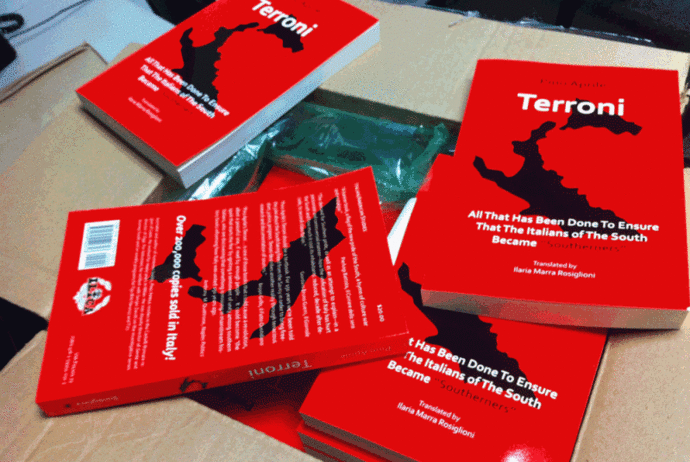Cominciare a parlare di un libro partendo dalla traduzione? Sì, si può soprattutto nel caso di “Terroni” di Pino Aprile, caso editoriale in Italia. Da poco il saggio, ricostruzione dei torti subiti dal meridione, si trova anche nelle librerie americane, edito da Bordighera Press e tradotto su iniziativa della fondazione ILICA.
Abbiamo incontrato l’artefice della sua non facile versione inglese, Ilaria Marra Rosiglioni. Giovane italo-americana vive tra gli Stati Uniti e l’Italia e affianca il suo lavoro di traduttore all’impegno nell’organizzazione della fondazione ILICA.
Posso dire di essere italo-americana al cento percento! Ho eseguito tutti i miei studi negli Stati Uniti e l’America ha formato il mio modus pensandi. Ho però sempre desiderato di tornare in Italia. Dopotutto mi sono laureata in lingua e cultura Italiana e storia dell’arte. E a Roma mi sento appagata e felice anche solo facendo una passeggiata o andando in autobus giorno dopo giorno.
Cosa hai pensato quando ti hanno chiesto di tradurre “Terroni”.
Quando ho letto la quarta di copertina e la descrizione del libro mi sono subito incuriosita. Mi ero posta come tanti certe domande sul Sud, soprattuto dopo aver visto Napoli e Palermo. Poi, avendo le mie radici nel meridione, da una parte napoletana e pugliese, sentivo che certe risposte mi erano dovute.
Quali sono state le difficoltà che hai incontrato nel tradurlo?
Il libro ha un tono particolarmente sarcastico. Cercare di catturare quest’aspetto è stata una scommessa. Tradurre delle parole è molto più facile che tradurre un emozione.
E tradurre non sempre basta. Bisogna a volte riscrivere per spiegare…
Troppo spesso quando guardo un programma americano in televisione con i sottotitoli in italiano mi trovo a pensare “Ma chi ha tradotto quella frase? Ha perso completamente il senso di quello che si è detto!”. Effettivamente questa è la sfida più difficile: leggere e rileggere il testo per essere sicura di aver capito il concetto. Bisogna poi scrivere in modo che il lettore riesca a capire: è qui che un “madrelingua” ha un vantaggio notevole. Non solo riesce a trasmettere il concetto originale, ma a renderlo orecchiabile al lettore e quindi più vicino. Il traduttore stabilisce un collegamento tra l’autore ed il lettore: è un ponte.
Hai amici italiani e americani negli USA. Hai già fatto leggere il libro a loro. Come pensi che lo prendano?
Il libro sta uscendo in questi giorni negli Stati Uniti. Lo consiglio vivamente a chiunque abbia radici nel Sud . Spero diventi uno stimolo a saperne qualcosa di più…
Quale è il libro/scrittore che ti piacerebbe tanto tradurre?
Per quanto riguarda i libri, non ho nessuna preferenza: ogni autore ha qualcosa da insegnarmi e accolgo qualsiasi sfida. Forse mi divertirebbe di più a fare qualche traduzione per un programma televisivo o qualche film: ci sono delle lacune pazzesche. Credo di poter essere d’aiuto!
E ILICA si impegnerà nel prossimo futuro in questo campo?
La missione di ILICA è quella di diffondere la lingua e cultura Italiana. Diventa quindi importante tradurre e farlo guardando al futuro.


































 At a press conference held at the museum,
At a press conference held at the museum,